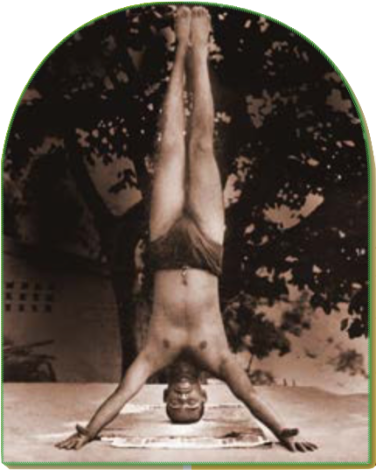by PC Kapoor, Director Sivananda center, Delhi

Balancing (equilibrium) brings equanimity. Lack of equilibrium brings just the opposite. We feel out of control when we lose our balance and the ego hates to lose control. When we balance, we align our body’s centre of gravity with the earth’s gravitational field. Quite literally, we place ourselves in physical equilibrium with a fundamental force of nature. We cannot achieve this harmony by remaining still. We must refresh our balance moment after moment in a sustained effort to centre and re-centre. When we are successfully able to do this, it brings our flesh and bones into balance, along with our nerve impulses, thoughts, emotions and our very consciousness, hence calming us.
A great way to find our balance is by performing balancing asanas. These asanas develop and stimulate the cerebellum in our brain. The cerebellum controls the balance and motion of our body. Normally, human beings have uncoordinated movements, requiring their bodies to constantly compensate this lack of balance to avoid falling over or knocking against things. This inefficiency of humans results in expending a huge effort to achieve simple results, thus creating considerable additional stress in the body. The balancing asanas quieten subconscious and unconscious movements by inducing physical balance. They still the brain centre or cerebellum and bring balance to the physical body through the pituitary gland. During the inverted asanas, extra blood travels to the brain, nourishing it with oxygen and nutrients and improving the functioning of the hypothalamus. As the moving body attains balance it becomes increasingly free to rely on other forces, such as gravity, to support and propel it. This way it conserves its own energy and achieves grace and fluidity of motion.
Even relatively simple balances like Vrksasana (Tree pose) demand our full, wakeful attention. The instant we lose focus, we fall over. There is an unavoidable immediacy to these balancing asanas. Standing on one foot, we naturally drop extraneous thoughts to focus on the task at hand. That is why thee poses can instill a deep sense of calm even though they require intense, unwavering alertness. In addition to promoting concentration and calm, these poses strengthen our muscles and build our coordination and balance, improving our manner of standing and walking. They also impact how we perform may of our everyday activities. These benefits may in turn prolong our lives, helping us avoid falls that often lead to injuries and death among the elderly.
Strength and flexibility in postures is not by themselves a sign of progress. A smooth, rhythmical, balanced breath is. It relaxes the nervous system. Practice of balancing asanas with controlled breathing increases vital energy, and fine tunes the nervous system to eventually lead to control of the mind. The focus required to perform these asanas with steadiness develops concentration and balance at the emotional, mental and psychic levels. These asanas are specially noted for balancing the nervous system and removing stress and anxiety. For relief of excessive tension these postures should be held for as long as possible. Practice of these asanas helps us to face a challenging task while staying mentally calm and detached.
As well as the physical benefits of balancing postures there are mental and pranic benefits also. The mental benefits of balancing asanas include improved concentration and greater clarity of thought, increased ability to deal with complex situations without suffering from stress, overcoming mental disorders, overcoming sluggishness (tamas) and hyperactivity (rajas) and better emotional control.
The pranic benefits of balancing postures are also powerful. The prana when consciously controlled is a strong vitalising and regenerating force. Once prana is controlled, it can be manipulated for self-development for healing apparently incurable diseases and also aids in helping to heal others.
Mayurasana (Peacock) stimulates the metabolic processes increasing secre- tions from different organs. It harmonises the glands of the endocrine system and stimulates elimination of the toxins from the blood. The digestive organs are mas- saged and intestinal peristalsis is stimu- lated—easing constipation, diabetes and sluggishness of the liver and kidneys.
Garudasana (Eagle) strengthens the muscles of thighs and calves and the knee and ankle joints. It tones the nerves and loosens the joints of the legs and arms. This asana rms the upper arms, stretch- es the shoulders and opens hips. It also works on the abdominal muscles and brings a fresh supply of blood to the kidneys. It relieves sciatica and rheumatism.
Kakasana (Crow) improves physical control and coordination, revitalises the nerves, helps develop strength and ex- ibility in the muscles of the wrists, arms and shoulders. Legs, hips and back are also made strong. Kakasana also stretches and lubricates the joint tendons and lig- aments of the upper body, expands the chest and increases breathing capacity.
Natarajasana (Lord Siva’s Dance Form) and Vrksasana (Tree) balance and cen- tre the body. These asanas improve physical control, coordination and alignment, balance the nervous system, and strengthen leg and ankle muscles and stretch the entire body. The Tree posture especially helps stabilise the pelvis, elongates the spine and increases the exibility of the inner thighs.
email: [email protected]